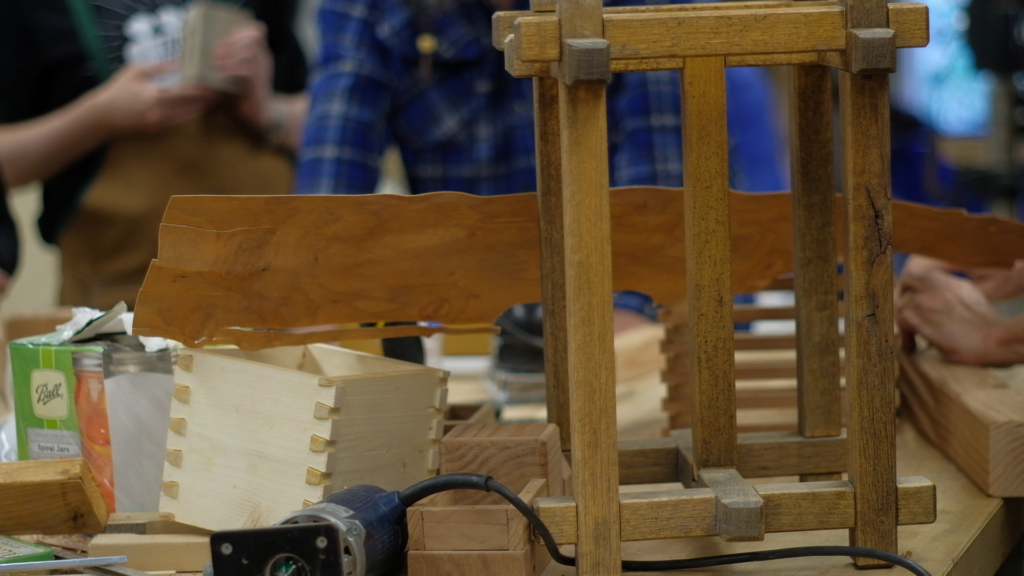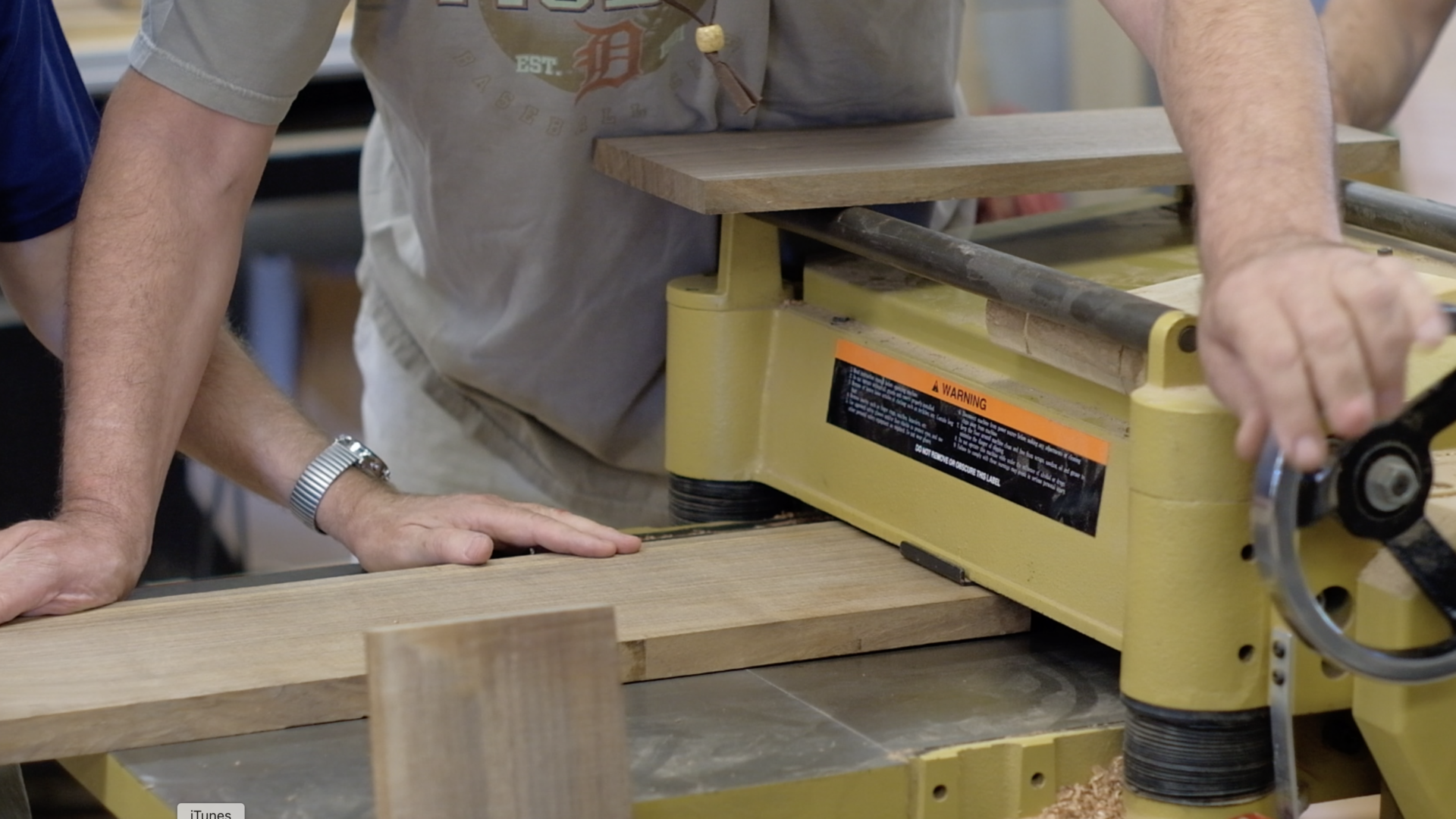Looking at a finished piece of woodwork, or a finished anything, it isn’t always clear how it got made. But on closer inspection, many maker projects are really just comprised of the outputs of many small tasks. We call those tasks “chunks.” Flattening rough wood, as in the header image, is a small task. Squaring an edge is a small task. Ripping to width along the squared edge a is a small task. But after those tasks or chunks, even though no modular component or clear progress has been made, you are getting closer to a completed project. Chunking happens naturally whenever we do things in steps. But self-conscious awareness of chunking demystifies a process and makes projects approachable and repeatable for students.
Chunking is important when visual plans are not an option. A novice student can be shown each chunk of work, without the cognitive load of memorizing the entire project. An advanced student familiar with common chunks of work (such as those in the sizing up process), can refer to the “plans” in the form of an exploded hierarchy and infer what chunks of work are necessarily to make each component. Chunking is also important because it facilitates progressive disclosure. by having the option for distinct units of learning.
Chunks of work are also very often transferable. In woodworking, the sizing up process is made up of chunks common too many projects. Joinery is common to many, many woodworking projects. A student who learns the “chunks” of work involved in joinery can transfer that knowledge to any other woodworking project.

